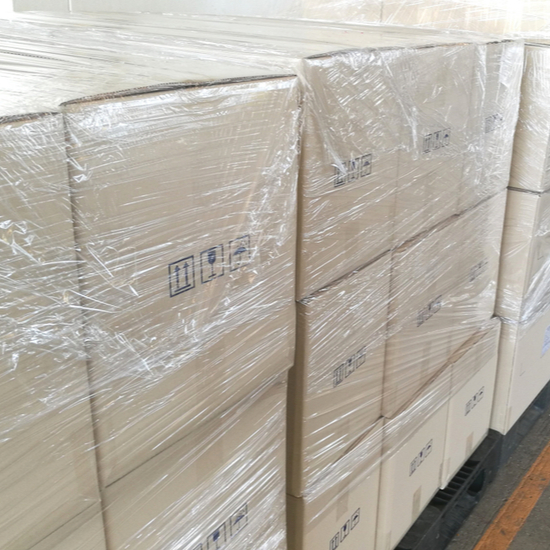What Is Stretch Film?
Stretch film, or stretch wrap, is a cost-effective and reliable method of securing loads for LTL or FTL shipment. This article will help you understand what stretch film is made of, how it is used and its advantages for unitizing palletized and unpalletized loads.
What Is Stretch Wrap Made of?
Stretch wrap is a plastic product, typically made up of co-extruded LLPDE resins. Other types of resins, such as LPDE, as well as additives such as tackifiers, are sometimes used in combination with LLPDE. Depending on the quality of the resins and the specific formulation used by the manufacturer, the stretch film will have certain performance characteristics and price points. No two stretch film products are exactly the same in terms of important application capabilities such as holding force, stretch and cling.
Some stretch films use recycled resin, and almost all stretch films are easily recyclable.
For What Is Stretch Wrap Used?
The main application of stretch film is unitizing palletized loads, including boxed and unboxed products. Stretch film can also be used on loads with slip sheets rather than pallets. High-performance stretch films are capable of securing extremely heavy loads — something that might also be accomplished by applying numerous layers of lower-end films to the load.
In addition to unitizing, stretch film in narrow (3”-5”) widths is also popular for bundling products to be inserted in a box for parcel or LTL shipment.
How Do You Use Stretch Film for Unitizing?
Stretch wrap can be used by hand or with stretch film equipment.
- Hand-held films are most commonly 12”, 15” and 18” wide (or metric equivalent). Ergonomic hand-held dispensers are available to make the work faster, easier and achieve higher stretch percentages. Hand-held film is ideal where multiple staging areas are involved, or in low-volume applications.
- Platform stretch wrappers are available for higher volume situations where staging is more centralized and when forklifts are involved. These machines are designed for a wide range of throughput rates.
- Low-profile stretch wrappers are similar to platform models, but suitable for pallet-jack operations. Both platform and low-profile machines use film 20” wide or greater, and with roll lengths considerably longer than hand-held film.
- Fully automated, in-line equipment is available for high production applications.
Generally, equipment achieves much higher stretch percentages than hand wrappers, which reduces cost per load and increases the holding force on the load. For this reason, even low-volume operations will often opt for equipment.
What Are the Advantages of Stretch Film?
Here are six very important advantages.
- Because stretch film can be stretched up to twice its original length or more, it typically produces the lowest cost per load of any unitizing material. In particular, stretch film is much less expensive than steel or polyester banding and shrink film.
- High quality stretch film is reliable because it applies great holding force to the load, helping to ensure your shipment arrives in the same condition in which it left.
- Stretch film provides some degree of moisture protection, unlike banding, strapping tape or twine.
- For applications where security is important, tinted and opaque films are available to keep the contents of your shipment unidentifiable.
- Stretch film is safer to apply and remove than banding, especially steel.
- Automated stretch film systems can achieve very high throughput.
GWC Packaging offers a wide range of hand and machine stretch films, as well as stretch wrap equipment for the full gamut of unitizing applications. Contact us today for more information, to arrange a meeting or place an order.
